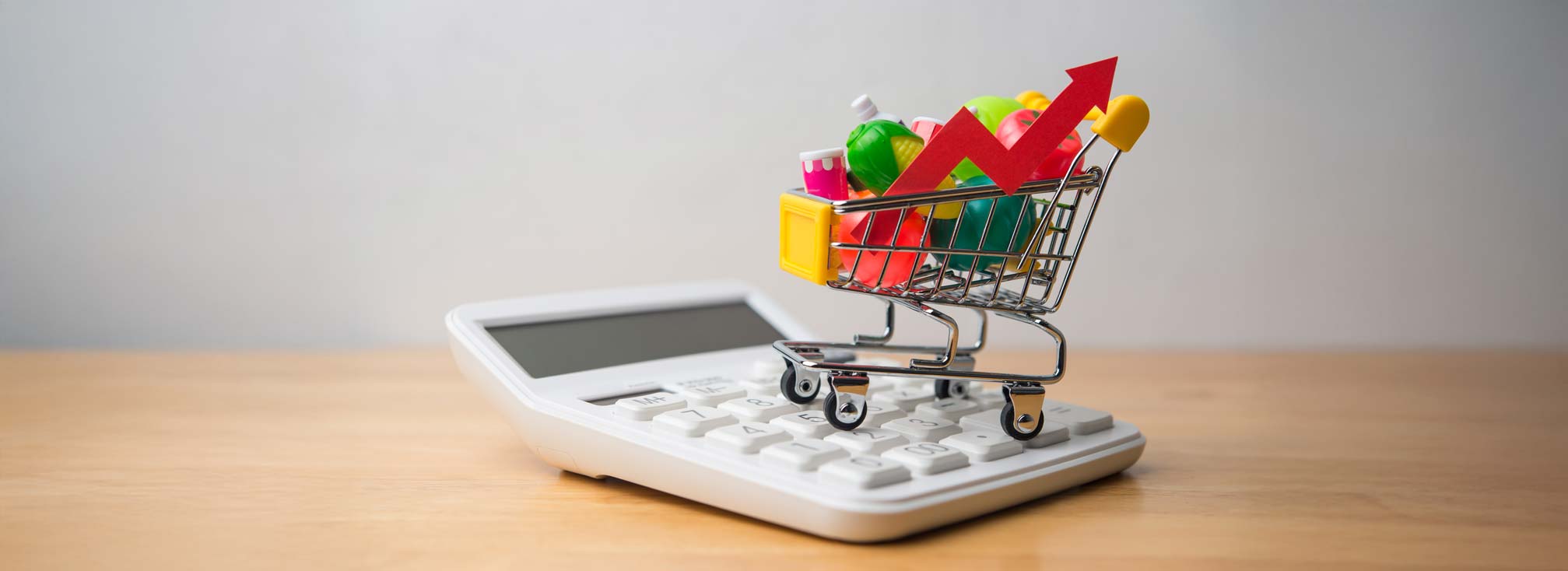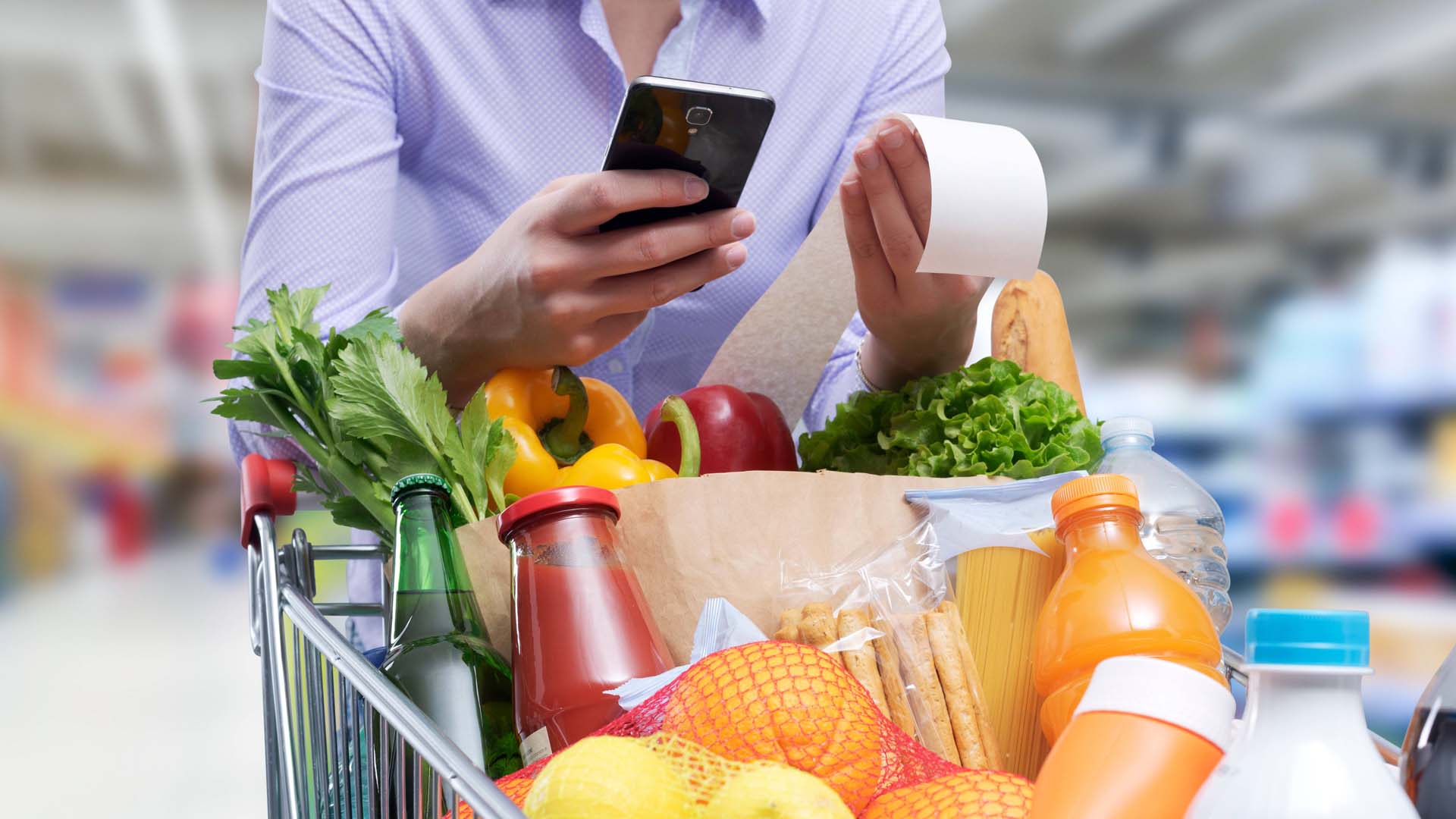

That feeling of a weekly shop that costs a little more than it did last time is becoming all too familiar. Just when we thought prices might be settling down, the cost of everyday essentials seems to be on the march upwards once again, stretching pensions and budgets to their limits.
You're not seeing things; the reality is that the price of food is rising faster than other costs. But why is this happening, and what can be done? We’ll delve into the reasons for the price hikes on your favourite items and share some practical tips to help you take back control of your food bill.
What’s on this page?
In the year to August 2025, food and non-alcoholic drink prices in the UK increased by 5.1%. That was up from 4.9% in July, and meant a rise in food price inflation for a fifth consecutive month, according to the Office for National Statistics (ONS). The figure is well ahead of the general inflation rate, which was 3.8% for the same period.
And the situation isn’t likely to get better any time soon. The British Retail Consortium (BRC) has warned that food inflation will continue to rise. It says that it could reach 5.7% in December and could remain above 5% well into 2026 if the retail industry is hit by further tax rises in the autumn Budget.
Sebina McCullough, director of external relations at Money Wellness, says: “Food price inflation remains stubbornly high because of global supply pressures, rising energy and transport costs, and climate-related crop shortages.
“While all households feel the squeeze, older people on fixed or modest incomes are hit hardest because food takes up a bigger share of their weekly budget.”
Soaring food prices aren’t down to a single cause, but a combination of pressures. Farmers face steeper bills for fertiliser, animal feed, fuel and labour, while transport, packaging and new regulations all add to the tab.
Weather shocks from droughts and floods have also dented harvests, tightening supply at the same time as global commodity markets for grains, oils and dairy have been particularly volatile.
Danni Hewson, head of financial analysis at AJ Bell, says: “Changes to national insurance contributions and the increase in the national living wage have both had a knock-on effect on British producers, growers, pickers and retailers.
“Many of those businesses have small profit margins, so even a tiny increase in costs has an impact and that makes it very difficult for many businesses to simply swallow the costs, especially as they are dealing with their own price increases just like all of us.
“Add in the costs associated with a new packaging tax which came in at the start of October and those additional costs are also likely to find their way into the prices that all of us pay at the till.”
According to the ONS, items with big price rises over the past year include beef and veal (24.9%), butter (18.9%), chocolate (15.4%), coffee (15.4%), and whole milk (12.6%).
Beef prices have climbed because UK cattle numbers have fallen while the costs of production have surged. While farmers are cutting back herds, feed, fertiliser, fuel and labour costs have all jumped, squeezing margins. But despite the cost-of-living squeeze, consumer demand for beef has stayed relatively stable, pushing prices higher.
Jason Archie-Acheampong, sustainable sourcing lead for coffee and cocoa at Fairtrade, says: “Over the last two years, green coffee prices have almost doubled and cocoa prices have surged. The recent price spikes in the market reflect deeper, longstanding issues in these industries. In the case of coffee it’s the chronic underpayment of coffee farmers, combined with a decrease in supply caused by adverse weather conditions, particularly in the two biggest coffee producing countries: Brazil and Vietnam.
“Climate change is also putting the cocoa crop and the livelihoods of cocoa farmers at risk. By 2050, large areas of West African growing regions will become unsuitable for growing today’s cocoa varieties.”
The rising prices of takeaway food have also been noticeable. Bakery chain Greggs has increased its prices three times this year. Tesco increased its meal deal price by 25p in August. Upmarket sandwich chain Pret A Manger was criticised when it launched salads costing £12.95 earlier this year. It is now trialling meal deals for the first time, to attract more cost-conscious consumers.
Some food manufacturers deal with food price inflation through higher prices. But many use less visible tactics, namely ‘shrinkflation’ and/or ‘skimpflation’.
Clare Moffat, tax and pensions expert at Royal London, explains: “Shrinkflation is when the size reduces but the price stays the same. Many consumers notice price increases more than they notice the size of the product decreases when they are buying goods in the supermarket. But it becomes more noticeable when food doesn’t go as far at home.”
She adds: “What isn’t as obvious is skimpflation. This is when the quality of a product is reduced, perhaps by using cheaper products to make it.”
The Guardian last month found that boxes of Celebrations and Quality Street will be smaller this Christmas than previously, as will bars of Toblerone and Chocolate Orange.
Research by Which? last year found that shrinkflation is much more widespread than just chocolate. It found products which had shrunk without a proportional price drop included Listerine mouth wash (from 600ml to 500ml), PG Tips Tasty Decaf pyramid tea bags (180 bags to 140) and Bisto Best chicken gravy granules (250g to 230g).
When it comes to skimpflation, it noted reductions of key ingredients in Tesco Finest sausages (from 97% pork to 90%), Morrisons guacamole (80% avocado to 77%) and Waitrose butter chicken curry (47% chicken to 41%).
Food inflation has been one of the key drivers of CPI (Consumer Prices Index) inflation in recent years, with food and non-alcoholic drinks making up about 10% of the CPI basket. When food prices rise, they push general inflation higher.
Higher food costs also spill over into restaurants, takeaways, and catering services, raising prices in those categories too.
McCullough says: “For over-50s, especially those living alone or managing health conditions, the impact goes beyond the till. Rising food costs force difficult trade-offs with heating, medicines, or social activities, which can harm both physical and mental wellbeing.”
There are ways to cut the cost of your weekly shop. Switching supermarkets, for example, can lead to significant savings. According to Which? research, Aldi and Lidl were the cheapest supermarkets in September 2025, followed by Tesco (with Clubcard) and Asda. Sainsbury’s, Ocado and Waitrose came out as the most expensive.
At Iceland and The Food Warehouse, shoppers aged 60 and over can also receive 10% off their entire in-store purchase every Tuesday, with no minimum spend. To take advantage of the discount, simply show a valid ID, along with a free Iceland Bonus Card.
Using supermarket loyalty schemes carefully can save you money. You might also be able to buy supermarket gift cards at a small discount and then use them to pay for your shopping. For example, a Blue Light card costs £4.99 for two years and is available to many public sector workers as well as retired NHS and ambulance service staff and volunteers, retired police and retired fire service staff. You can then buy supermarket gift cards at a discount as well as getting a range of other discounts.
You might be able to save on some items by buying frozen rather than fresh, and buying long-life staples in bulk. The world food aisle can sometimes be cheaper – check it out for things like beans, lentils, noodles, rice, herbs and spices.
Swapping from branded items to own-brand, or from premium own-brands to the cheaper version, can cut costs too – it can be worth trying to see if you notice the difference. The price per kilo (or per 100g) should be displayed on the shelf (or on the item listing if you are shopping online) and can help you to compare the value offered by different products.



The definitive list of travel discounts for train, coach, and bus travel across the UK.

Teachers can now get a Blue Light Card. Is the fee worth it? Discover the savings and top alternatives.

From money back on your shopping to cut-price food, these are the best apps to save you money.
